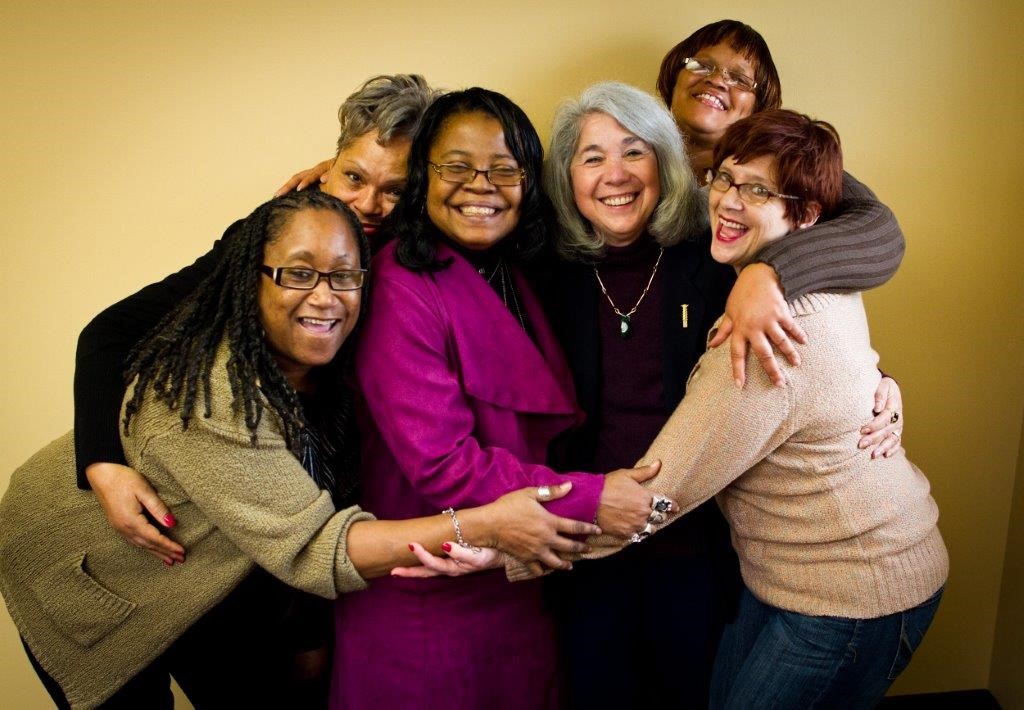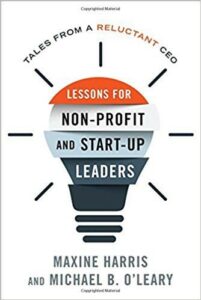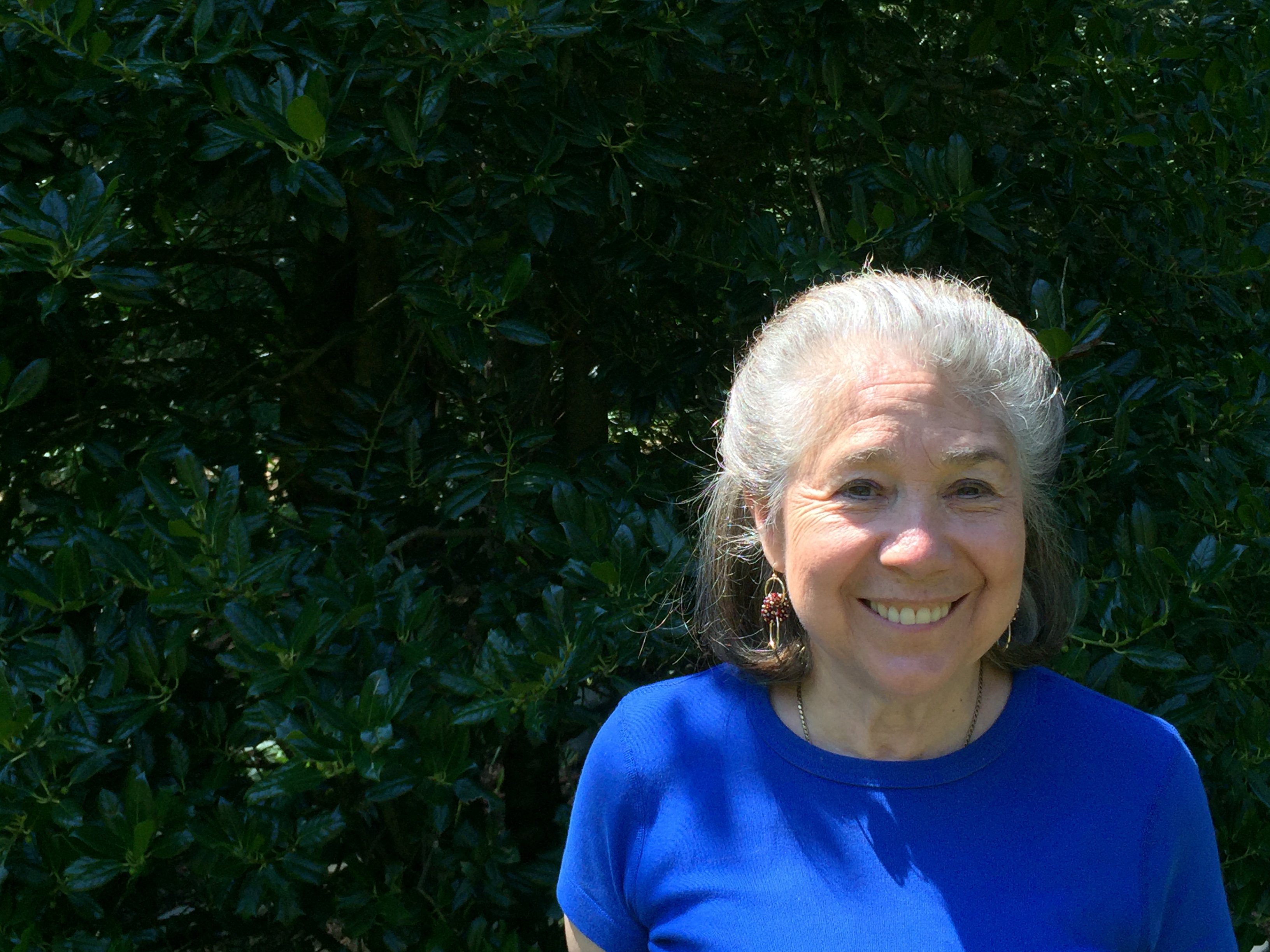Tales from a Reluctant CEO
Maxine Harris and her partner Helen Bergman started a business and grew it to $35 million through trial and error and constant change. In her new book, Lessons for Non-Profit and Start-Up Leaders: Tales from a Reluctant CEO, Maxine shares lessons that can benefit all of us starting something new. She shares how they overcame obstacle after obstacle to succeed. I recently spoke with her about the lessons she shares in her new book.
When should a start-up start thinking about culture?
Culture is not really something that you think about when you first start a business. You might say, we want to be casual or formal, or we want to maintain an air of professionalism, but short of being doctrinaire, you can’t really control what organizational culture will become. More than anything, culture evolves from the personalities of the founders. I happen to be very chatty and like to ask a lot of questions. Some employees see that as friendly; others see it as intrusive. When I push people to “think smart” and try to do things in better and more creative ways, some people see me as demanding and judgmental, others feel that I am encouraging and stimulating. In both cases, it is the employee who identifies culture based on how they interpret what is going on.
Culture is one of those things that exists in the eye of the beholder. An employee, an outside consultant or a business colleague takes a step back and sees the unspoken rules and nuances of the organization. Sometimes people are only aware of the organizational culture when they are asked what they like or don’t like about their jobs. When we asked people who were joining the organization what they were looking for in their selection of a job, we got a glimpse into the kind of culture in which they would feel most comfortable. And while many said they were looking for an environment in which their opinions were valued and respected, others wanted a cultural milieu in which the boss would tell them what to do and they would have clear guidelines for performance.
Over the years, as Community Connections grew in size and diversified in its programs, culture changed. You could feel the difference. A business with three employees can’t help but be informal and casual. But as we grew and increased our size to over 400 employees, it became impossible not to have some hierarchical structure. You can remember the names of three people, but when the size gets big, and leaders are rushing from one meeting to the next, it’s hard to be as friendly as you’d like to be.
You wrote fairy tales for each chapter. That’s unusual in a business book. Why did you decide to do that?
I wanted to write “lessons for non-profit leaders” because after almost 30 years of founding and then running a non-profit business, I thought I had learned some things that I wanted to pass on to other start-up leaders. But, I had to decide how I was going to do that. For myself, I don’t really learn from books with a lot of research studies and tables of statistics. Even though I know the relevance of hearing what the academic studies have to say, I often find my eyes glazing over and skipping pages to get to the “good” parts. I knew I didn’t want to write a traditional business book.
I have always thought of myself as a storyteller. I’m curious and I want to hear the story of how a person or an event unfolded. It made sense that I would start by telling the story of Community Connections. I thought the journey of the little start-up that grew into a 35-million-dollar business would be fun to tell.
But real-life stories are not the only kind that appeal to me. I have always been an avid reader of fairy tales, the stories that grow out of our imaginations. So, I decided to write a series of fables and have each one illustrate a challenge or a dilemma that business leaders might face.
We often use our imagination to test out new ideas, and I think imagining what might be possible is part of starting and running a business. In a fairy tale, the normal rules are temporarily suspended, and you can make things up as you go along. If you start a truly innovative business, feel free to go to new and uncharted places. There is something exciting about letting yourself dream about what you might like the world to look like.

As your business grew, how did you tackle the problem of hiring new employees?
When you first start a business or a non-profit organization, you aren’t thinking about employees. We had just three people and one floor of a town house, and we shared a mission and years of friendship. Our business was small and we really didn’t need more than just the three of us. As we got bigger, we knew we couldn’t do all the work ourselves, so we began to think about hiring more people.
And the first thing we did was to think of who we knew who might want to join our group. We never thought of what skills or talents we needed to make the organization run more smoothly. We just thought about whom we wanted to hang around with. We made the mistake of hiring people without paying attention to the skills and talents we needed to get a job done, and most of the time this ended poorly.
Despite the fact that we desperately wanted to avoid becoming too bureaucratic, we realized that we needed to define positions and articulate skill requirements before hiring someone to join our team. Further growth demanded that we establish a department of human resources that would be responsible for hiring and training employees.
But we ALWAYS reserved the right to go outside the structure we had developed. Most of the time we hired a person to fill a position, but every once in awhile, we hired an exceptionally talented person to create a position. Some prospective employees are just too good to pass up.
Become Organizationally Self-Aware
You talk about self-awareness on the part of leaders, but you also mention organizational self- awareness. What do you mean by that?
We all assume that organizations function more smoothly when leaders are aware of their strengths and weaknesses, their impact on others and their particular vulnerabilities. Over the years leaders at Community Connections evaluated one another, were evaluated by employees and received coaching and training from outside consultants. And many gained a greater sense of their leadership styles. Truthfully, however, most of this resulted in very little change. Leaders who were indecisive now knew they had trouble making decisions, just as overly aggressive leaders now had an awareness of how their styles intimidated employees. But awareness rarely translated into change, and some leaders were even offended or embarrassed to acknowledge a style that had been observed for years by others.
When we took a step away from individual self-awareness, however, we were able to identify another less threatening type of awareness that could more easily be embraced by our entire leadership team, and that was organizational self-awareness – not who am I and how am I seen, but who are we and how are we seen? At Community Connections, we saw ourselves as mission-driven yet willing to take a risk. We also saw ourselves as innovative and curious to learn new things. Our awareness of the kind of organization we were led us to embrace business opportunities outside our comfort zone and to compete with larger more experienced organizations for new contracts. We saw ourselves as a can-do organization and that enabled us to do big things.
Organizational self-awareness transcends the self-awareness of any given individual. It speaks to a collective identity that is shared by an entire organization.
Manage Change
How has your organization managed change over the years?
Change is an inevitable part of running a business. Some changes are driven by outside forces, like new regulations or increased competition. Some originate inside the organization itself when workforce needs shift or staff turnover suddenly becomes high. But just as with evolution, organizations either adapt to changing conditions or they risk becoming extinct. No business leader wants to go the way of the dinosaurs.
Over the years, I’ve learned a few simple rules that make it easier to survive, manage or initiate change. First, whenever possible, change should be intentional rather than reactive. I tend to be the kind of person who leaps first and looks second. And while that sometimes works, and my instincts are right on, there have been many instances when I made a quick decision that proved to be a colossal mistake. As a leader you should always survey the landscape, make sure you understand just what changes need to be made, what resources need to be in place, and what the consequences of a mistake might be. In other words, look first, make an intentional plan, and then leap.
Change is always easier when you create a nimble system. Some organizations get so weighed down by bureaucratic process, meetings, protracted discussion and the need for multiple checks and balances that the mechanism for deciding becomes more important than actually changing. I think of a backpacker who carries so much weight that he or she can’t move fast enough to either make it to the destination or avoid danger along the way.
The more people who need to have input into a decision to change the longer it will take to make that change. And while you don’t want a leader going rogue, you also don’t want to lose an opportunity because too many people need to approve a decision before you can act.
And finally, I like to always make sure that I leave enough gas in the tank to make a quick correction if I need to. Commit to a change, but always have sufficient resources so that you can rectify a mistake. It makes sense to have a plan B, but a plan B isn’t worth much if you don’t have the capital to carry it out.
What was your biggest mistake as you grew Community Connections and how have you overcome it?
Our biggest mistake was not what we did, but what we failed to do. We failed to set up or even think about a succession plan. The last thing that is on the minds of start-up leaders, whether in the for-profit or the non-profit world, is who is going to take over when they are gone. In the absence of a plan, one or both of two things begins to happen: Some employees begin to worry and feel that the organization might be in jeopardy if the leader leaves. Others begin to plot and plan for how they can position themselves to take over. In either case, the organization experiences an insecurity that interferes with productive work.
As I began to realize that the lack of a succession was posing problems, I did two things. First, I began the process of building a deep bench. A group of almost 20 employees were cross-trained in a number of important organizational functions and tasks so that anyone could feel a level of confidence if asked to take over. That same group of people were given the opportunity to attend a local university and receive specific training in executive leadership. And finally, I established an executive team that met weekly to review current practices, solve problems, and strategize about the future direction of the organization. This cadre of individuals felt confident that any one of them could take over when the time came, and the larger employee pool came to feel the same way.

But, I also did something else that might have been equally important. With the guidance of the Board of Directors, I developed a process whereby a new leader would be chosen. Human Resources assisted with devising an application process, a way for assessing a candidate’s skills and weaknesses, a method and schedule for interviewing prospective candidates and finally a methodology for making a selection.
Just knowing that there was a way for assuring stable leadership put people’s minds at ease. When you believe that there will always be a Community Connections, then the future feels secure and everyone can just focus on getting the current job done. And the leader can feel a sense of relief that he or she has done everything possible to guarantee the sustainability of the organization.
For more information, see Lessons for Non-Profit and Start-Up Leaders: Tales from a Reluctant CEO.

